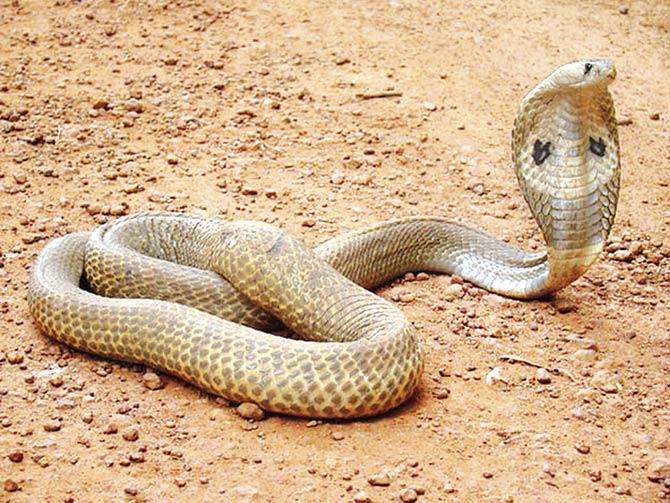Mumbai is a unique city, located in the midst of an ecological hotspot, the Western Ghats. The megalopolis, thus supports immense biodiversity, and in abundance

 Mumbai is a unique city, located in the midst of an ecological hotspot, the Western Ghats. The megalopolis, thus supports immense biodiversity, and in abundance. Even today, certain areas like the Aarey Milk Colony, IIT-Bombay campus and the hills around Mulund, allow you to hear and watch grey hornbills, peacocks and paradise flycatchers. Our beachcombers are no strangers to ghost crabs, a huge variety of gulls and dolphins either. Given this diversity, it’s not surprising Mumbaikars can easily come across over 30 species of snakes.
Mumbai is a unique city, located in the midst of an ecological hotspot, the Western Ghats. The megalopolis, thus supports immense biodiversity, and in abundance. Even today, certain areas like the Aarey Milk Colony, IIT-Bombay campus and the hills around Mulund, allow you to hear and watch grey hornbills, peacocks and paradise flycatchers. Our beachcombers are no strangers to ghost crabs, a huge variety of gulls and dolphins either. Given this diversity, it’s not surprising Mumbaikars can easily come across over 30 species of snakes.
 The Indian cobra
The Indian cobra
ADVERTISEMENT
It has been a cultural practice for Indians to worship snakes, especially the cobra which is associated with Lord Shiva. Over time, farmers have developed a deep respect for cobras as they control the rat population that destroy their crops and chew up electric wires. However, the recent practice of offering milk to snakes, applying vermilion on them and making them ‘perform’ in public is not only against cultural logic and law, but also hazardous to both, the cobra and the handler. To avoid being bitten, snake charmers either stitch the mouths of snakes in their captivity or pluck out the fangs and burn their venom glands with hot iron rods. This leads to fungal and bacterial infections. According to the Indian Herpetological Society (IHS), close to 90,000 cobras are killed within a week around Nag Pachami According to the Wildlife (Protection) Act, possession, display and sale of any protected wildlife creature is punishable by law. Before Nag Panchami, snake charmers go around Rajasthan, Gujarat, Maharashtra and Haryana to capture black and Indian cobras. More than half the snakes die while being transported, due to heat, stress and fatigue, or starve to death because their mouths are stitched. These then end up in illegal skin trade markets that produce belts, bags and shoes. Those cobras which end up outside temples or near bus stands are kept without food and water for days. And so, they end up drinking anything provided, whether milk, cola or ink.
Does this sound like worship? To me it looks like mass genocide and torture of creatures we apparently revere.
A lot of people will argue, do we need venomous cobras around housing colonies, where our kids play? It is important to realise that whether we like it or not, cobras live in close proximity of humans, especially in urban, semi-urban and rural areas, where garbage tends to attract rats, who make elaborate burrows. Mumbai’s garbage conundrum has thus led to a thriving population of snakes, including cobras. But, if one compares actual instances of conflict or direct aggression between humans and cobras, you realise that these are rare.
For me, the cobra is a symbol of calm and dignity. It has modern medicinal value since its venom helps treat pain induced by arthritis and cancer, especially when no other pain-relievers work. Many laboratories have employed the neurotoxic properties of cobra venom to develop analgesic and anti-inflammatory medication. Cobras, therefore, are a sought after species for scientific research.
Most non-biologists would imagine that they are aggressive but they are timid. They raise their hood only when disturbed, scared or cornered without escape. The raised hood, formed by filling the lungs with air and flattening the ribs, is a cobra’s signature identity. Some other snakes such as the rat snake, trinket and vine snake also raise their heads high and confuse amateurs, but the difference is that the flattening of the neck to form a hood is missing.
The easiest way to support and protect this dignified snake, which rarely causes harm to humans if given way, would be to raise public awareness and prevent live worship. Why not spread the word through posters or papier maché cobra idols? Protecting the live cobra will be the most fitting tribute to this regal snake.
Write in to Anand at sproutsonline@gmail.com
 Subscribe today by clicking the link and stay updated with the latest news!" Click here!
Subscribe today by clicking the link and stay updated with the latest news!" Click here!







